The catastrophe of the Austrian army near Ulm
Napoleon did not wait until the allies squeezed the French forces from subordinate territories and invaded France itself. “If I don’t be in London in 15 days, I should be in Vienna in mid-November,” said the emperor. London escaped, but Vienna had to pay for it. Of the many private tasks, the emperor immediately singled out the main one: to seize the strategic initiative, defeat the main grouping of the enemy, and take Vienna. Napoleon planned in several battles to bring the central power of the enemy coalition - Austria and dictate terms of peace to it. After that, the anti-French coalition lost most of its ability to fight with France. As for the other directions - Hanover and Neapolitan, Napoleon treated these theaters of operations as auxiliary, reasonably believing that success in the main direction would compensate for possible losses. In Italy, operated 50-thousand. corps of Marshal A. Massena. Massena coped with the task. He defeated the Archduke Charles under Caldiero, then occupied Venice, Carinthia and Styria.
At once, without hesitation, Napoleon adopts a new plan of war. On August 27, he immediately summoned the general intendant Daria and handed him over to the corps commanders the disposition of the new war. For several hours the emperor dictated the disposition of the new campaign. In all directions, orders were sent about a new recruiting recruitment to replenish the reserves, about supplying the army during its movement through France and Bavaria towards the enemy. To explore the characteristics of the theater of action, Napoleon 25 August sent Murat and Bertrand on a reconnaissance mission to Bavaria to the Austrian borders. 28 August followed, also incognito, but in a different route, Savary moved.
French army
In a few days, a huge French military vehicle set in motion. At the end of August, the 1805 of the “English Army” (“Army of the Coast of the Ocean”) by Napoleon, which will be transformed into the “Great Army”, began its movement towards the Rhine and the Danube. The French divisions left the Bois de Boulogne and moved east. The troops moved wide open and deep down the front. The infantry was walking along the roadsides, leaving the roadway for artillery and carts. The average pace of the march was about 30 kilometers per day. A well-developed supply system allowed virtually without stopping to overcome the distance in 500 — 600 km, which separated the Bois de Boulogne from the theater of forthcoming activities.
Less than three weeks, in incomplete 20 days, the huge for that time army was deployed with almost no serious patients and lagging behind the new theater of operations. September 24 Napoleon left Paris, September 26 he arrived in Strasbourg, and immediately began crossing the Rhine.
The French army moved in seven streams, from various directions:
- The 1 corps of the “Great Army” was the former Hanover army of Marshal Bernadot - 17 thousand people. The corps of Bernadot was to pass through Hessei and Fulda, and then go out to Wützburg, where he was to unite with the Bavarians retreating under the pressure of the enemy.
- The 2 Corps, the former right wing of the Ocean Coast Army, under the command of General Marmont - 20 thousand soldiers, marched from Holland and climbed up the Rhine. He had to go through Cologne, Koblen and force the river at Mainz, moving to the junction with the 1 case at Würzburg.
- The 3 Corps, a former camp in Ambletese, under the command of Marshal Davout - 25 thousand people, had to go through Monet, Namur, Luxembourg and force the Rhine near Mannheim.
- The 4 Corps under the command of Marshal Soult - 40 thousand people, and the 5 Corps headed by Marshal Lann - 18 thousand people who were the main camps in Boulogne, had to move through Mezieres, Verdun and force the Rhine from Speyer and in Strasbourg.
- The 6 Corps under the command of Marshal Ney - 19 thousand people, was to follow through Arras, Nancy and Saverne.
- The 7 Corps under the command of Marshal Augereau - the troops of the left wing of the “Coastline of the Ocean” stationed in Brest — about 14 thousand people, followed other connections as a general reserve.
These corps accompanied the large formations of the reserve cavalry, which was moving ahead on the right flank of the main group. These were more than 5 thousand cuirassiers and carabineers in the d'Hôpule and Nansuti divisions, as well as four dragoon divisions with a total number of more than 10 thousand, accompanied by the foot dragoon Barage d'Hillet division - 6 thousand. The Imperial Guard came out of Paris, a selective unit commanded by Marshal Bessiere - 6-7 Thousands of Soldiers. Together with the Bavarian, Baden and Württemberg contingents, the total number of Napoleon’s army was 220 thousand with 340 guns. However, in the first line, Napoleon could use about 170 thousand people.
A feature of Napoleon’s army was that each corps was an independent combat unit (“army”), which had its own artillery, cavalry, and all the necessary institutions. Each corps had the opportunity to fight in isolation from the rest of the army. The main artillery and cavalry forces did not depend on any of the marshals, they did not belong to any of these corps. They were organized as special units of the Great Army and were placed under the direct and immediate command of the emperor himself. Thus, Marshal Murat, who was appointed head of the entire cavalry, consisting of 44 thousand people, was the executor of the will of the emperor. This allowed Napoleon to concentrate the main power of artillery and cavalry in one area.
A special part of the army was the Guard, which consisted of regiments of foot grenadiers and foot rangers, of horse grenadiers and horse rangers, of two squadrons of horse gendarmes, of one squadron of Mamelukes recruited in Egypt, and of the “Italian battalion” (it had more French than the Italians). In the Imperial Guard took only especially distinguished soldiers. They received a salary, were better supplied, enjoyed good food, lived in close proximity to the imperial main apartment, and wore elegant uniforms and tall bear caps. Napoleon knew many of them by sight and their life and service. At the same time, the soldiers loved Napoleon and believed that the words "in the knapsack of each soldier lies the marshal's baton" is not an empty sound; after all, many officers and even generals and marshals began serving as ordinary soldiers. The discipline introduced by Napoleon was peculiar. He did not allow corporal punishment in the army. The military court sentenced in the case of major misconduct to the death penalty, to hard labor, in milder cases - to a military prison. But there was one particularly authoritative institution - a comrades' court, when the soldiers themselves could, for example, for cowardice, sentence a comrade to death. And the officers did not intervene.
Napoleon was very attentive to the commanders and without hesitation elevated talented commanders. Napoleon surrounded himself with a whole retinue of brilliantly gifted commanders. Almost all of them were decisive and independent, had "their" talents and at the same time were excellent performers, from half a word understanding the thought of Napoleon. In the hands of Napoleon’s strategist, this magnificent cohort of commanders and tacticians was a formidable force. As a result, the highest command of the French army was superior to the command of the same Austria. And Napoleon himself was at the peak of his talents during this period.
The French army had a high morale, as it was the army of victors, confident of the justice of the war waged by France. “This is the army,” noted Marmont, “was powerful not so much by the number of its soldiers, but by their nature: almost everyone had already fought and won victories. The inspiration of the revolutionary wars still remained, but it went in the directional direction; from the commander-in-chief, from the corps and division commanders to ordinary soldiers and officers, everyone was hardened in battles. 18 months spent in the camps, gave her additional training, hitherto unseen spike and unlimited confidence in their soldiers. "
Austrian offensive
While the troops marched to the dooms of France, Napoleon closely watched from Paris the actions of the enemy. Marshal Murat with his headquarters is located in Strasbourg, from where he constantly informed the emperor about the actions of the Austrian army.
The Austrian army was equipped and organized far better than before. The army of the Mac was designed for the first encounter with the advanced forces, and especially high hopes were pinned on it. Much depended on the first battle. In Austria, Russia and England, they believed in the success of the Danube Army of Mac. This veprodiscipline was not only due to the knowledge of the good condition of the Austrian army, but also the Allied Command’s assumptions that Napoleon would not be able to transfer the entire “English Army” at once and send part of it, and even if he sent the whole army, he would not be able to quickly transfer and focus it on the Rhine.
8 September 1805, the Austrian troops under the command of the Archduke Ferdinand and Mack crossed the River Inn and invaded Bavaria. A few days later the Austrians occupied Munich. The Bavarian Elector hesitated and was in constant fear. He was threatened, demanding a union, a powerful coalition of Austria, Russia and Britain, threatened him, also demanding a union, the French emperor. The ruler of Bavaria first entered into a secret alliance with the anti-French coalition, promising Vienna assistance in the outbreak of war. However, a few days later, while still thinking, he took his family and the government and, together with the army, fled to Würzburg, where the troops of Bernadotte were sent. So, Bavaria remained on the side of Napoleon. As a result, the anti-French coalition suffered its first diplomatic defeat - Bavaria could not be forced to act against France. The Elector of Württemberg and the Grand Duke of Baden also remained on the side of Napoleon. As a reward, the Electors of Bavaria and Württemberg were produced by Napoleon into kings. Bavaria, Württemberg and Baden received the award with territorial awards at the expense of Austria.
After the Austrians failed to force Bavaria to side with the anti-French coalition, Mac, instead of stopping and waiting for the approach of the Russian army, continued to lead troops to the west. September 21 advanced units of the Austrians reached Burgau, Günzburg and Ulm, and after receiving the first information about the approach of the French army to the Rhine, it was decided to pull the lagging units to the front line - the line Ipper. At the same time, the Austrian army was upset by a forced march on bad roads, the cavalry was exhausted, and the artillery barely kept pace with the rest of the troops. Thus, before the collision with the enemy, the Austrian army was not in the best condition.
I must also say that Karl Mack has gone from a soldier to a general. Possessing certain abilities and, no doubt, courage and perseverance, he was not a good commander and there were no particularly brilliant military operations behind him. Mack was more a theorist than a practitioner. In 1798, commanding 60-th. Neapolitan army was defeated by 18-thousand. french corps. In this case, Mac himself was in captivity. However, he was not blamed for this, since the low combat qualities of the Italian troops were well known at that time. But Mac attracted the Minister of Foreign Affairs and Vice-Chancellor Ludwig von Kobenzel, since he did not belong to the generals of the aristocracy, was not a supporter of the Archduke Karl and shared the militant views of the Vice-Chancellor. Because of this, Mack made a dizzying career, taking the place of Quartermaster General under the formal commander-in-chief of the young Archduke Ferdinand.
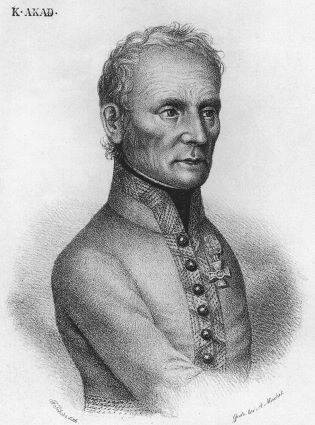
Austrian Commander Karl Mack von Leiberich
By September 22, the Danube army with four detachments — Aufenberg, Verpek, Risch, and Schwarzenberg — was stationed along the banks of the Danube and Ipper in the sector of Günzburg and Kempten. The right flank was provided by the Kinmayer 20 corps, scattered from Amberg to Neuburg with troops on the Danube crossings. The army of Kutuzov at that time was in 600 kilometers from the Danube army and went to the aid of the Austrians with a forced march. Russian troops were partially transferred on carts to speed up their movement. However, the Mack army itself did everything so that the Russians did not have time to help.
The surrender of Ulm
Ulm operation
Napoleon decided to send corps in independent columns and, gradually narrowing the front of the offensive, to cross the Danube between Donauvert and Regensburg, to bypass the right flank of the Austrian army. Deep coverage assumed the exit of the “Great Army” to the enemy’s operating line, which inevitably led to the defeat of the Austrian army. October 1 Napoleon made an alliance with Bavaria, October 2 - with Württemberg, received auxiliary Germanic contingents and secured its operating lines.
To mislead the enemy, Napoleon ordered the troops of Lannes and Murat to make a demonstration in the direction of the valley of the River Kinzig to the Black Forest aisles, giving the impression of movement of the main French forces from the Black Forest, as a result, Mac believed that the French were going as planned with west and stayed in place. He did not organize further exploration and was not aware of how the French corps were moving. Mack did not know about the menacing detour, and the news of the appearance of the enemy at Würzburg led him to the conclusion that the French had put up a barrier here against Prussia. The movement of the French corps was carried out secretly from the Austrians. Corps were covered with a cavalry veil. Only Her in the center openly went to Studgart with the aim of disorienting the Austrians. In the course of the movement, the general front of the French corps, which constituted 250 kilometers on the Rhine, gradually narrowed. Therefore, if the Austrians tried to attack one of the French corps, in a few hours they would have been hit by several corps.
Only 5 of October, when the French reached the Gmünd-Ellingen line, did the Austrians discover an adversary maneuver. However, even then Mack remained in place, not believing that the main forces of the French army were making a round. It seemed to him that the French were showing coverage in order to force him to leave a strong position and open the flank of the Austrian troops in Tyrol and Italy. In reality, Napoleon was afraid that Mac would have time to retreat and make it impossible for him to impose a battle on his opponent, that the Austrians would have time to join up with the Russian army. He even spread a rumor that an uprising had begun in Paris and that French troops were preparing to return to France.
October 6 French troops reached the shores of the Danube behind the right flank of the main forces of the Austrians. Grand strategic coverage was a success. "The little corporal seems to have chosen a new way of waging war," the soldiers joked, "he is fighting with our feet, not with bayonets." In the evening of October 7, Murat's cavalry and the Vandam division from Soult's corps, having crossed at Donauvert, were already on the right bank of the Danube. They rejected the weak Austrian units located here and moved on. The Austrian corps of Kinmayer, without taking the fight, retreated in the direction of Munich. The rest of the Napoleon corps and the Bavarians approached the Danube, preparing for the crossing. Only the corps of Ney was to remain on the left bank of the river against Ulm in order to block the possible route of the Austrians to the northeast.
Napoleon's army with a powerful wedge pressed through the right flank of the Austrian army. What's next? Napoleon, having overestimated Mack's determination, decided that the Austrians would break east or south into Tyrol. Napoleon almost excluded the withdrawal of the Austrians on the left bank of the Danube in the northeast direction, as they were in danger of being surrounded. The Austrian troops could, donating rears, to concentrate forces and break through to the east, crushing separate French columns. In this case, the overall superiority of the French army was compensated by the concentration of Austrians in certain areas and the energy of the onslaught. The withdrawal of the Austrians to the south was the safest option, but extremely unprofitable strategically, as he led Mac's army away from the main theater of operations, permanently excluding the possibility of participating in the war.
October 7 Austrians received news that the enemy forced the Danube at Donauvert. Mack realized that his army was cut off from Austria, but he did not attach much importance to this, because he thought that the French army was approximately equal in size to the Austrian army (60-100 thousand people) and did not fear it. He planned to rely on the powerful stronghold of Ulm, to remain on the Danube, threatening the enemy’s left or right flank. A detachment of General Auffenberg in 4800 man was sent through Wertingen to Donauvert, which overturned Napoleon's "vanguard".
Meanwhile, the main forces of Napoleon’s army were crossing over to the right bank of the Danube. Murat moved almost all his divisions to the other side of the river, the Soult corps crossed the water barrier in Donauvert, parts of the Lannes corps were shipped across the Danube at Münster. Davou crossed the river at Neuburg, followed by Marmont and Bernadot. Soult rushed to Augsburg, Murat's cavalry rushed to Zusmarshausen.
Napoleon, seeing the inaction of the enemy, decided that Mac would break through to the east, through Augsburg. Therefore, he decided to concentrate the troops around this city and block the enemy’s path to the east. This task should have been accomplished by the 4 Corps of Soult, the Lannes 5 Corps, the Guards and Murat's reserve cavalry. To help these troops had to go and 2-th corps of Marmont. Corps Davout and Bernadot were supposed to be a barrier to the east, against the possible appearance of the Russian army. The corps of Ney, with whom the dragoons' division Baraghe d'Hilles was with, it was decided to throw on the flank and rear of the retreating enemy army. Ney was to force the Danube at Günzburg.
October 8 Austrian detachment Auffenberg slowly went to Vertingen, not realizing that in front of the main forces of the French army. Murat's cavalry attacked the Austrians in stride. The 3 Division Bomon broke into Wertingen. The Klein 1 Dragoon Division and the hussar regiment attacked the Austrian cuirassier. It must be said that the Austrian cavalry was one of the best in Europe. The regiments of cuirassiers were especially famous for their coherence and quality of horse. Therefore, there began a stubborn battle with varying success. However, all the new troops approached the French and soon the Austrian cuirassiers were swept from all sides and overturned with heavy losses. The Austrian infantry, under the threat of striking the flank and rear, began to retreat. Here still came Udino's infantry, marching in the head of Lann's corps. The Austrians fluttered and ran into the woods, trying to escape with the broadswords of the advancing French dragoons and sabers horse rangers from Lannes Corps. Auffenberg's detachment was completely destroyed, losing about half of the killed, wounded and captured. General Auffenberg himself was captured. Thus, the Austrian soldiers paid for the mistake of their command.
By the evening of October 8, French troops blocked the path to the east. Mack at this time could not decide what to do. At first I wanted to retreat to Augsburg. But having learned about the defeat of Auffenberg and the appearance of large French forces on the right bank, he abandoned this idea and decided to move to the left bank of the Danube. However, he believed that this would be a counter-offensive, with the aim of defeating the French army. October 9 Austrian commander gave the order to concentrate the scattered troops from Günzburg and restore the previously destroyed bridges.
Marshal Ney, who was to attack through Günzburg, did not know that the main enemy forces were located here. Therefore, sent here the entire 3-th division of General Mahler. On the approach to the city, Mahler divided his troops into three columns, each of which was assigned to seize one of the bridges. One of the columns got lost and went back. The second column in the second half of the day went to the central bridge near the city, attacked the Austrians guarding it, but, having met with strong fire resistance, it withdrew. The third column of Brigadier General Labosse got lost, but still went to the river. French grenadiers surprise attack captured the bridge and took a position on the right bank, where they fought back the enemy’s counterattack until dark. As a result, one French regiment beat off the ferry under the nose of the whole Austrian army. The next day, Mack, confused, took a significant part of his troops to Ulm, including Yelačić’s left-flank corps.
As a result of all these maneuvers of the Austrian army, Napoleon could not understand the enemy. He calculated the best options for the enemy. He himself, as a brave and determined commander, would prefer a breakthrough to the east. Therefore, he paid this option the greatest attention, directing the main forces of the French army so as to block the escape routes in the Vienna direction. October 10 and 11 no News the movement of the Austrians to breakthrough was not received. She didn’t enter the battle with the Austrians and took the appointed ferries, that is, the Austrians were not going to cross to the left bank of the Danube. It turned out that Mac’s army would go south. It was urgent to block this path. As a result, Napoleon divided the troops into three groups: 1) the corps of Bernadotte and the Bavarians were supposed to advance on Munich; 2) the corps of Lanna, Ney and cavalry units under the general command of Murat were supposed to pursue the "retreating" Mac; 3) the corps of Sult, Davout, Marmont, two divisions of the foot cavalry and the guard, had to occupy a central position until the situation was further clarified.
It could not have come to Napoleon’s mind that the Austrians were not taking any emergency measures to save the army in a catastrophic situation for them. Mack, instead of forced marches to lead troops to the south, or trying to break through to the east, trampled on the spot, which demoralized the army. October 10 Mack concentrated troops in Ulm, and October 11 again decided to leave the left bank. From Ulm, the vanguard came under the command of General Klenau, and the rest of the troops followed him, except for Jelačić.
On the same day, French General Dupont received orders from Marshal Ney to move his division (6400 man and 14 guns) to Ulm and occupy the city, while the rest of Ney's corps was about to cross to the right bank. Unaware that his division was going straight to the whole Austrian army, by noon Dupont approached the village of Haslau, which lies 6 kilometers north of Ulm, and here it collided with the Austrians. Dupont's troops engaged in battle with superior enemy forces. The French lost 2 thousand people and retreated to Ahlbeck.
Disoriented by the stubborn resistance of the enemy, Mack decided that this was the vanguard of the main forces of the French army and decided to return to Ulm and the next day begin to withdraw to Bohemia (Czech Republic). Mack decided to cover this maneuver with a demonstration of Schwarzenberg’s detachment along the right bank, and with Jelačić's troops along the left bank of the Iller River. However, when Elachich 13 of October was already in transition from Ulm, Mac, under the influence of "confirmed" false rumors about the landing of the English landing force on the coast of France and the retreat of the French army to the Rhine, which began in Paris after the "uprising", ordered his troops to concentrate again on Ulm Fortress.
It must be said that Maka was confused by the skillful spies led by Napoleon, led by the most famous of them, Schulmeister, who assured the Astra general that they needed to hold out that the French would soon retreat, because an uprising had broken out in Paris. When Mack began to doubt, the spy made it known to the French camp, and there a special issue of a Paris newspaper was printed by means of a marching printing press with a message about an imaginary revolution in Paris. This number was given to Mac, who read it and calmed down.
Defeat. Results
October 14 the French began to quietly surround the Ulm fortified area. In a few skirmishes the Austrians broke up, the Mac's army lost several thousand people. By October 16 the encirclement ring closed. Mack's position has become quite desperate. Shocked Austrian general asked for a truce. Napoleon sent an truce to him demanding surrender to surrender, warning that if he took Ulm by attack, then no one would be spared. General battle, in fact, was not. After the artillery shelling of Ulm began, Mack 17 of October personally poisoned the French emperor and announced his decision to capitulate.
By October 20 1805, the surviving army of the Mac, with all its military supplies, artillery, flags, and Ulm Fortress with it, was surrendered to the victor’s mercy. 23 thousand people were captured, 59 guns became French trophies. At the same time part of the Austrian army still tried to escape. 8-thousand the detachment of General Werneck, pursued by Murat and surrounded by him at Trachtelfilgen, was also forced to capitulate. Jelacic with 5 thousand detachment was able to break through to the south. And the Archduke Ferdinand and General Schwarzenberg, with 2, thousand horsemen managed to slip from Ulm to the north at night and go to Bohemia. Some soldiers just ran away. These examples show that with a more decisive leader, a large part of the Austrian army had good chances for a breakthrough. For example, it was possible to lead the army south to Tyrol. The army dropped out of the struggle in the main (Vienna) direction, but remained.
Thus, 70-th. Austrian army Maca ceased to exist. About 12 thousand were killed and injured, 30 thousand were captured, some were able to escape or run away. Napoleon let go of Mac himself, and sent the surrendered army to France for various jobs. The French army lost about 6 thousand people. Napoleon won this battle mainly by skillful maneuvering. Napoleon October 21 turned to the troops: “Soldiers of the Great Army, I promised you a great battle. However, thanks to the evil actions of the enemy, I was able to achieve the same success without any risk ... In fifteen days we completed the campaign. ” He was right, this battle led to the collapse of the strategy of the third coalition and its defeat.
As a result, Napoleon completely seized the strategic initiative in his own hands, began to beat the enemy piecemeal and opened the way to Vienna. The French quickly moved to the Austrian capital and captured many more prisoners. Their number reached 60 thousand people. Austria could not recover from this strike and lost the war. In addition, the Austrians, with their mediocre planning, put the Russian army under the command of Kutuzov under attack, which, after the most severely formed 11 march of October, went to Branau and was alone against the main forces of the French emperor. The Russians again had to make the hardest march, now in order not to get hit by the superior forces of the enemy.
Poppy surrenders to Napoleon at Ulm
- Alexander Samsonov
- War of the Third Coalition
England vs Russia. Drawing into war with france
England vs Russia. Getting involved in a war with France. Part of 2
"I won the battle with some marches." How Napoleon defeated the III anti-French coalition
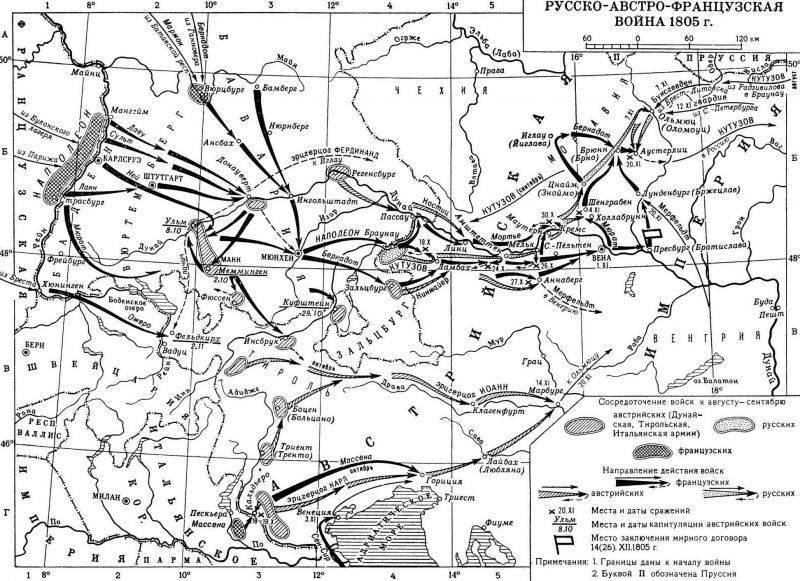
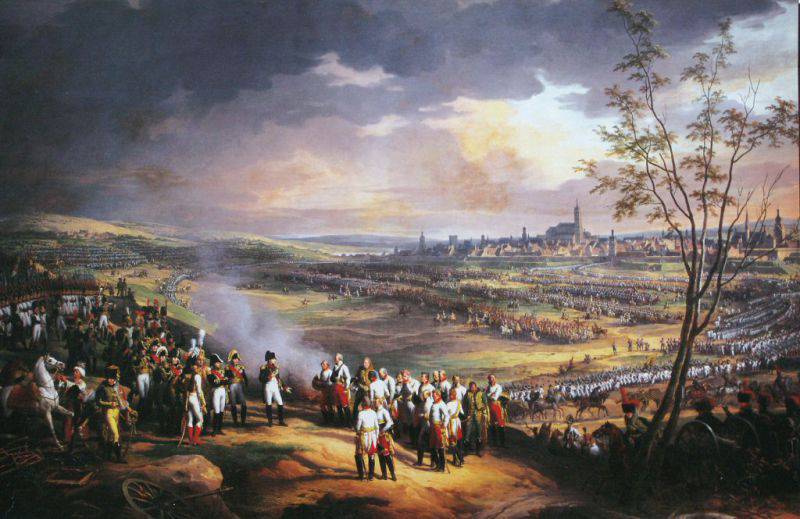
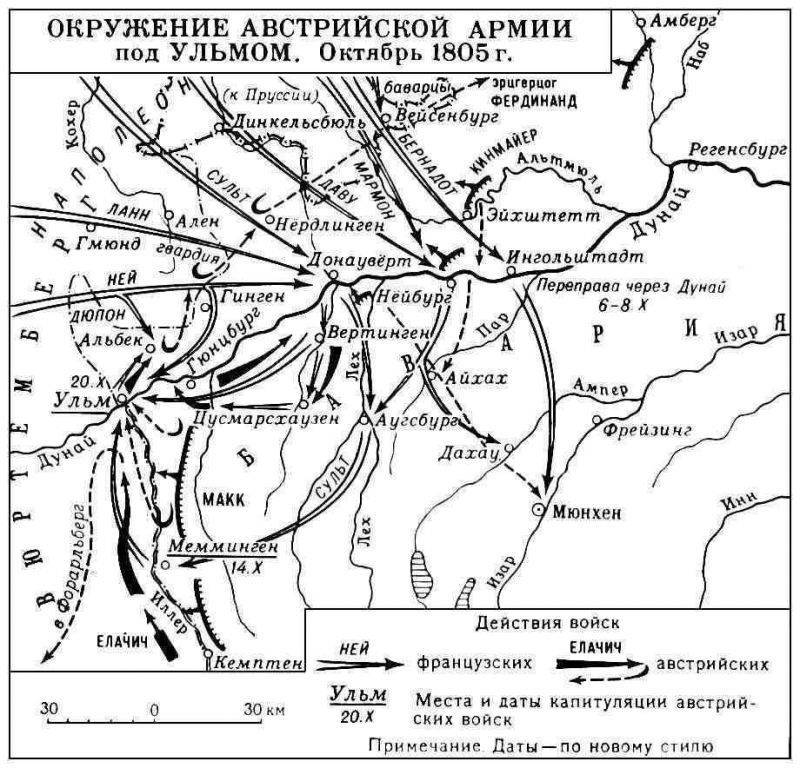
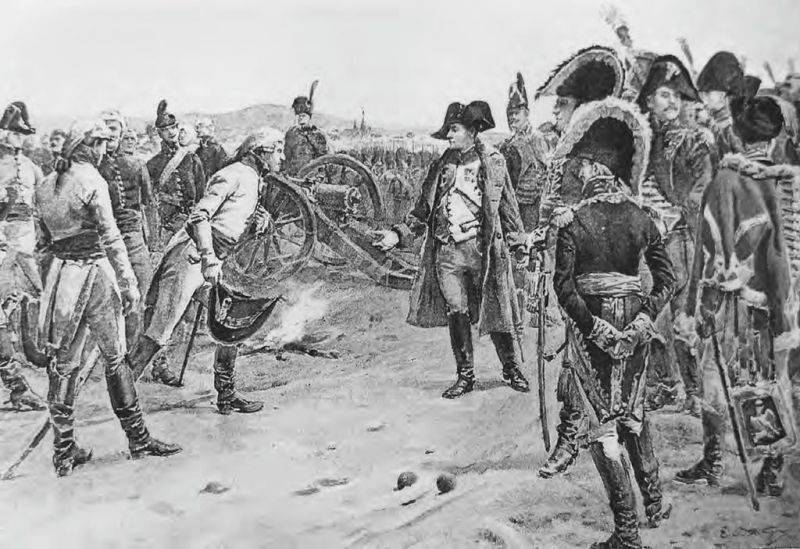
Information